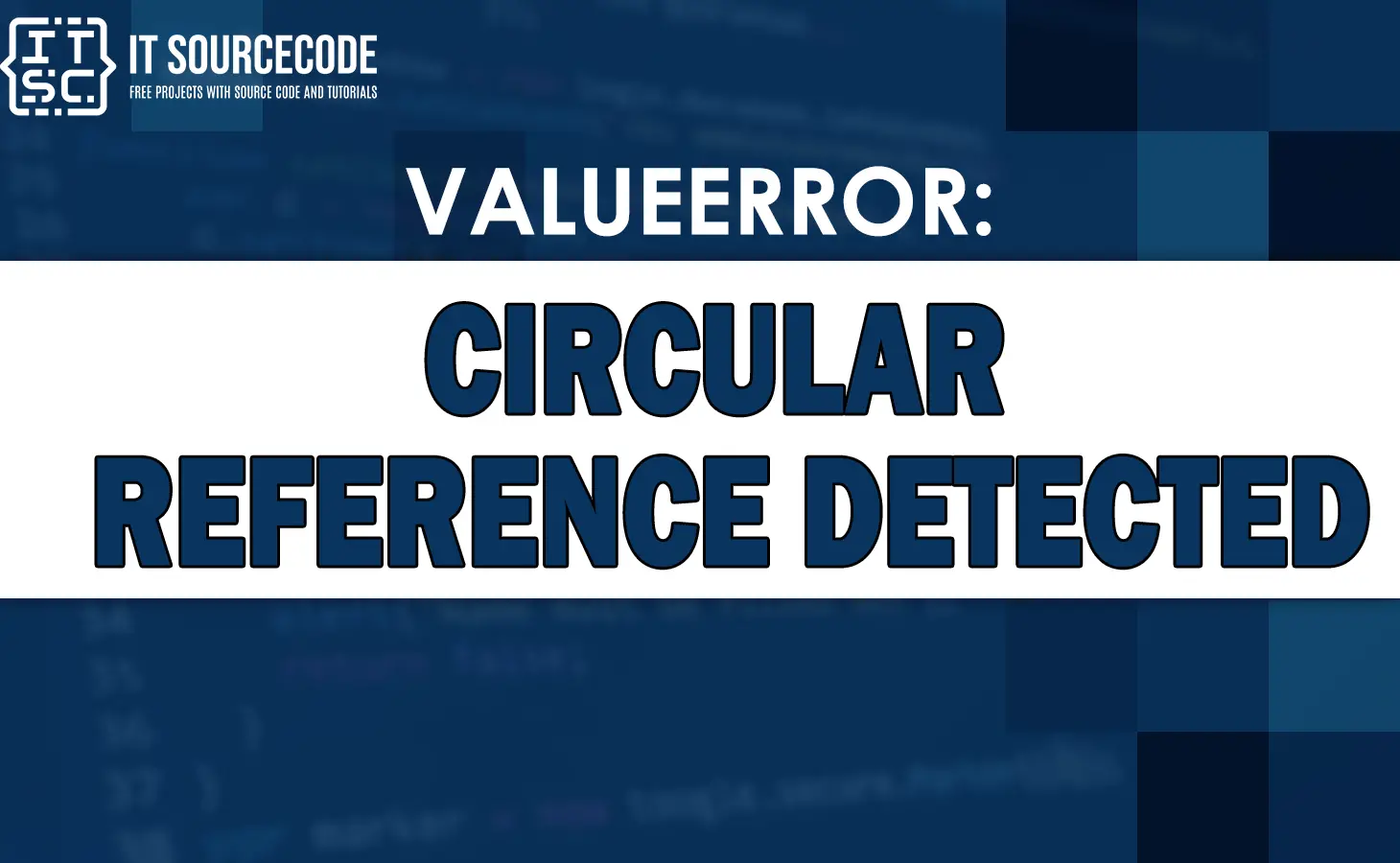When you working or running a program, encountering errors is not inevitable. One of the errors is the ValueError: Circular Reference Detected.
This error message shows that there is a circular reference in the code, where an object refers to itself directly or indirectly.
What is a Circular Reference?
A circular reference occurs when an object refers to itself in some way, creating a loop or cycle.
Common Causes of Circular References
Circular references can occurs due to different reasons, and the following are:
- Mutual referencing between objects
- Incorrect data structure design
- Improper resource cleanup
How to Identify Circular References
Here are a few methods you can apply to detect circular references:
- Use debugging tools
- Enable garbage collection tracing
- Analyze memory usage patterns
Now that we already understand the circular references, let’s move on to the example codes and their solution.
How to Fix the Valueerror circular reference detected?
To solve the Valueerror circular reference detected error. Here are the following solutions you can apply.
Solution 1: Breaking the Circular Reference in Python
To fix the circular reference in the given Python example, we can change the code as follows:
class ExampleEmployee:
def __init__(self, emp_name):
self.emp_name = emp_name
self.emp_bestfriends = []
def add_friend(self, emp_bestfriends):
if emp_bestfriends not in self.emp_bestfriends:
self.emp_bestfriends.append(emp_bestfriends)
jude = ExampleEmployee("Jude")
glenn = ExampleEmployee("Glenn")
jude.add_friend(glenn)
glenn.add_friend(jude)By adding a check to ensure that a emp_bestfriends is not added twice, we break the circular reference. Now, Glenn and Jude are emp_bestfriends without causing a circular dependency.
Solution 2: Redesigning the Code Structure
In some situations, breaking the circular reference may not be simple or possible.
If you find yourself in such a situation, it might be essential to rethink the code structure and eliminate the circular dependency altogether.
This could involve reorganizing the classes, using callbacks or events, or employing design patterns that promote loose coupling.
By remaking the code structure, you can prevent circular references and improve the overall stability and maintainability of your codebase.
Solution 3: Manual Memory Management
If the circular reference is more complicated and cannot be easily fixed by breaking the reference or redesigning the code, you might need to consider manual memory management techniques.
This involves clearly deallocating the memory occupied by the objects involved in the circular reference.
Python provides the gc module, which grants you to control the garbage collector and manually break circular references.
By calling the gc.collect() function at the correct points in your code, you can trigger the garbage collector and ensure that circular references are resolved.
For Example:
import gc
# Manually breaking the circular reference
gc.collect()
print("Circular reference resolved successfully!")
By requesting the gc.collect() function, you swept the garbage collector to perform a collection cycle, which includes identifying and breaking circular references.
This manual memory management solution can be useful in situations where the circular reference cannot be resolved through other means.
Best Practices to Avoid Circular References
To avoid circular references in your code, look at the following best practices:
- Use Weak References
- Employ Garbage Collection Mechanisms
Frequently Asked Questions
Identifying circular references in code can be challenging. One solution is to use debugging tools or print statements to trace the flow of objects and their references.
Yes, circular references can lead to memory leaks. When objects refer to each other in a circular manner, the garbage collector cannot reclaim the memory occupied by those objects, resulting in memory leaks and inefficient memory usage.
Yes, circular references can occur in other programming languages as well.
However, Python’s garbage collector is explicitly designed to detect and handle circular references, which is why the ValueError: Circular Reference Detected error is specific to Python.
Conclusion
In this article, we discussed the ValueError: Circular Reference Detected error and its impact on programming.
We learned about the causes of circular references, identified example codes, and provided solutions to break circular dependencies.
Additionally, we discussed best practices for preventing circular references and answer common questions related to this topic.

